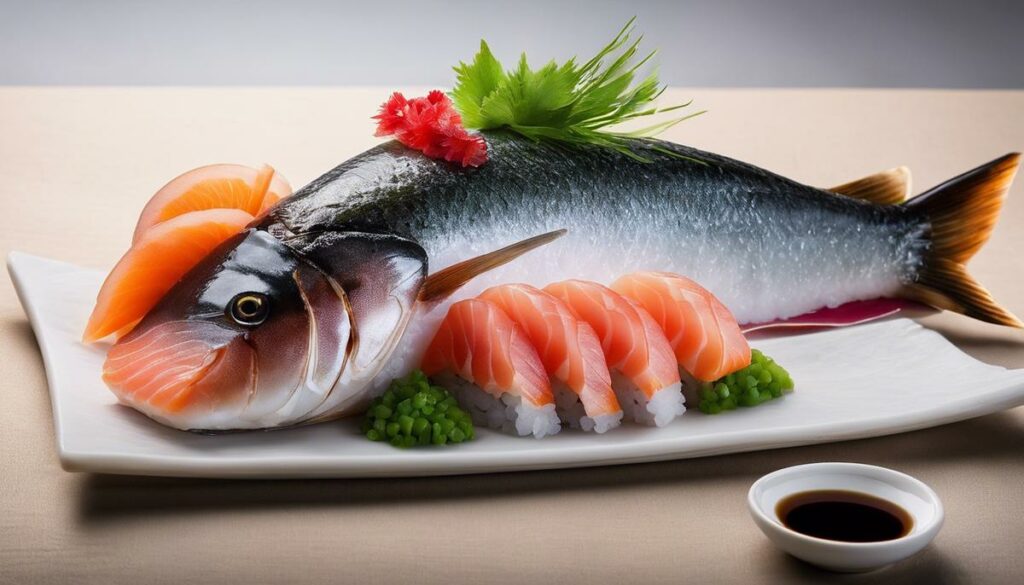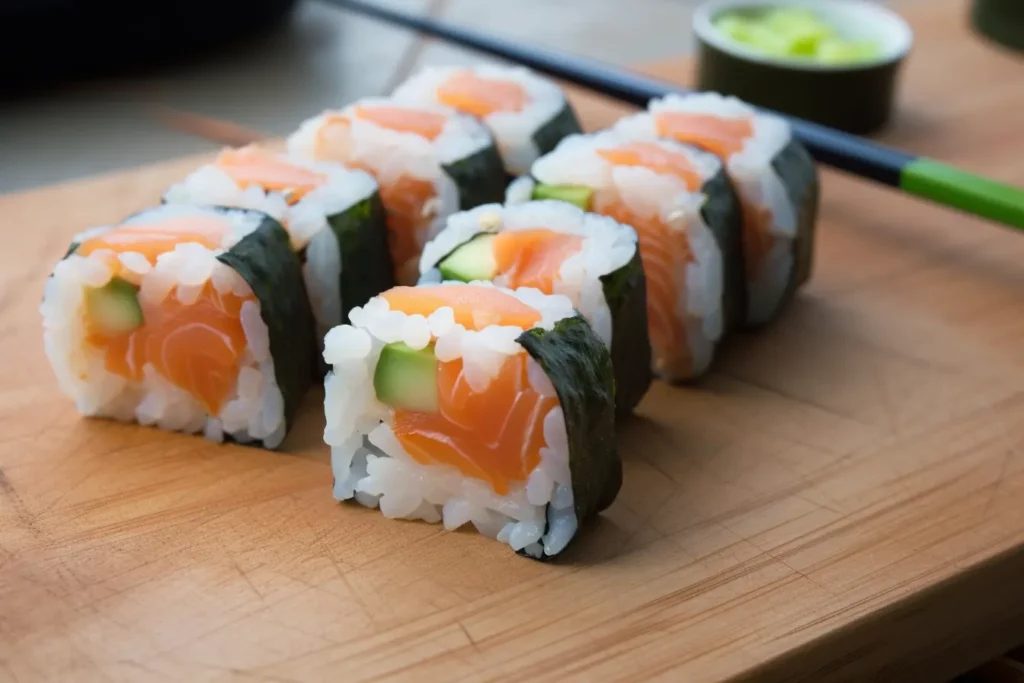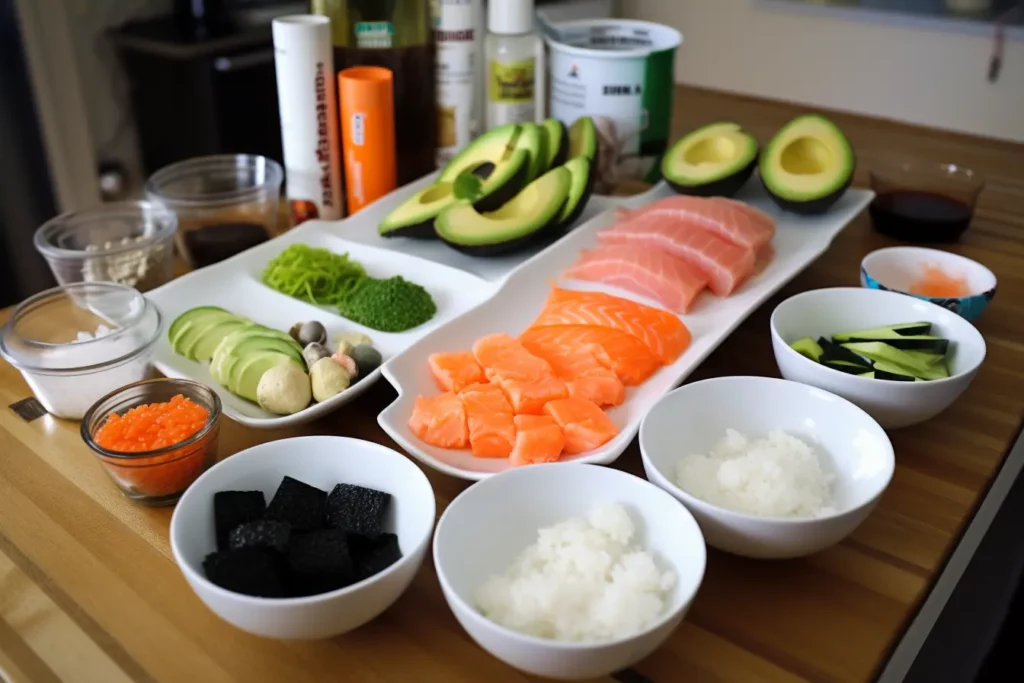Sushi is an exquisitely delicate and refined art that requires traditional techniques and superbly fresh ingredients. A major ingredient in outstanding sushi is, of course, the fish, but understanding what “sushi grade” actually means isn’t always clear to many of us. In this sense, knowledge of fish species, freshness and correct handling are just as crucial. Our focus here is to create an in-depth understanding of what characterizes “sushi grades” and why this definition plays an essential role in buying fish for sushi. In addition, we will focus on how to choose the most suitable fish and what attributes should be taken into account when doing so. Last but not least, we want to teach you how to store sushi-grade fish at home and prepare it safely to ensure the best taste and quality.
Understand What Sushi Grade Means
A thousand rays of sunshine will light your way as we take you on a new culinary journey, far from the traditional dishes you are used to. Let’s explore the fascination behind the term ‘sushi grade’.
‘Sushi-Grade’ immediately transports us to the world of the finest Japanese cuisine – a world where ingredients of the highest quality come together to offer us an unforgettable taste experience. But what exactly does the term ‘sushi grade’ mean? A deep look into this matter gives us some insight.
‘Sushi grade’ refers to the highest quality of fish that can be eaten raw. It’s not just a term; it is an award given to the fish according to strict guidelines and careful inspection. It is not just any fish, but one that does not compromise on freshness and taste.
In order to achieve the ‘Sushi Grade’ status, the fish must meet strict criteria. This includes, for example, putting the fish on ice immediately after being caught. The fish must also be tested for parasites to ensure that it is safe to eat raw.
In addition, there are certain types of fish that are considered ‘sushi grades’. These include tuna, yellowtail fish, and sea bass, among others. These fish generally have a clean, almost sweet flavor and make wonderful additions to the preparation of sushi.
So what are you waiting for? At your next party, take the step into the wonderful world of ‘sushi grade’. This exquisite delicacy is sure to make for great conversation and delight your guests!
Please note, however, that buying and consuming ‘sushi grade’ fish requires responsibility and knowledge. Rely on reputable sources and always follow hygiene rules to ensure that you and your guests have a safe and memorable culinary experience.

The right choice of fish
Choosing the right sushi-grade fish is about much more than just taste. It is a sensory experience that requires an eye for detail, respects traditional art and celebrates specific culinary rituals. So, here are some helpful tips to help you choose high-quality sushi-grade fish.
First of all, recognize the importance of color. Any fish that is considered sushi grade should be vibrant, clear, and bright in color. Any discoloration or cloudiness can be a sign of inferior quality. Trust your instincts and let yourself be guided by the visual appeal of the fish.
Another important factor is the consistency of the fish. High-quality sushi-grade fish generally feels firm to the touch. If the fish is too soft or mushy, it could indicate poor quality or poor handling. A smooth and slightly shiny surface is also a good sign.
Temperature is also a crucial aspect. Sushi-grade fish should always be kept cool to preserve freshness. A warm fish or fish stored at room temperature is a no-go.
Also, pay attention to the smell. A good sushi-grade fish smells fresh and clean, not fishy. If the fish has a strong or unpleasant odor, you should avoid it.
Also, trust the opinion of experts. Putting yourself in the hands of an experienced and trustworthy fishmonger is always a good decision. They have the knowledge and experience to select the best products and can help you choose the perfect fish for your sushi experience.
One of the last aspects to consider is the source or origin of the fish. It is always best to choose fish from sustainable sources to ensure not only the environment but also the highest possible quality of your fish.
For many, choosing the right fish for sushi is an art form. It requires a lot of patience, care, and dedication, but the end result is a culinary experience that you and your guests will never forget. So, take the time needed to choose the best sushi-grade fish for your next culinary masterpiece. It’s this blend of respect for traditions, attention to detail, and the pursuit of perfection that makes for the ultimate sushi experience.

How to store and prepare fish safely at home
When choosing sushi-grade fish, color plays a crucial role, as it is often an indicator of the viability and quality of the fish. Depending on the type of fish, you should look for a vibrant, rich color that shows that the fish is fresh. Pale or discolored skin may indicate spoiled goods.
When it comes to consistency, sushi-grade fish should be firm and elastic at the same time. When touched, it should quickly return to its original shape. Fish that appear soft, mushy, or sticky are not suitable for sushi. It is important that the fish retains its natural bite to ensure the characteristic texture of sushi dishes.
One aspect that is often overlooked is the proper storage of sushi-grade fish. Only at the right temperature will the fish stay fresh and safe for consumption. In general, sushi-grade fish should always be stored at a temperature of 0 degrees Celsius or below. In this way, the growth of harmful bacteria is prevented.
Equally important is the smell of the fish. Sushi-grade fish should have a fresh, salty smell. A strong, fishy smell is often a sign that the fish has already reached its best quality.
Anyone choosing sushi-grade fish should also resort to expert opinions. Fishmongers, cooks and sushi artists are particularly valuable points of contact. They can give valuable tips and help you make the right choice.
Finally, the source or origin of the fish also plays a role. It is important that the fish comes from sustainable, responsible fisheries to ensure the quality and taste of the fish.
Choosing the right fish for sushi is an art form in itself. It requires skill, knowledge, and an innate understanding of the intricacies of sushi-grade fish. Not only is it a matter of beauty, but it also enhances the final dining experience. So, consider it an enjoyable challenge and opportunity to immerse yourself in the beautiful world of sushi and embark on this exciting culinary adventure.

In summary, the art of selecting, storing and preparing “sushi-grade” fish for one’s own kitchen is a skill that can be easily learned through understanding and practice. From the definition and meaning of the term “sushi grade”, to getting to know the selection criteria, to proper storage and preparation, every step counts to achieve the best possible taste and quality. With time and practice, you will become more confident in your choice and handling of the fish and will be able to delight your guests with homemade sushi that meets even the highest standards of sushi restaurants.


